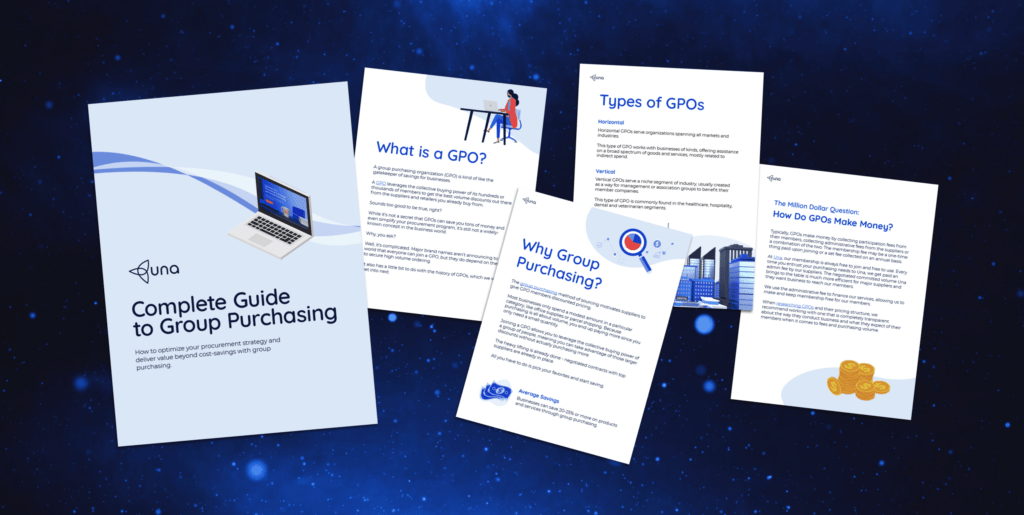What is Strategic Sourcing?
By Hugo Britt | September 1, 2020
When it comes to booking a summer vacation, what type of planner are you?
Are you most concerned with getting the cheapest price possible? Do you book on a whim, and think travel insurance is an unnecessary added cost?
Or, do you carefully plan every aspect of your trip? Do you price-shop, contact several travel agents to request information, and compare itineraries? Before committing, maybe you read customer reviews to ensure you’re booking with a resort that operates sustainably, and aligns with your core values.
While the first approach to booking a vacation is akin to running a competitive bid, the latter leverages all the elements of strategic sourcing.
What is Strategic Sourcing?
Historically, procurement teams have focused on the tactical aspect of sourcing. In particular, they’ve zeroed in on the cost-cutting of their organization’s day-to-day transactions. This involves, for example, running competitive bids, e-procurement, issuing purchase orders, and overseeing invoicing and payments.
It might be an effective way to drive business savings in the short-term. This approach, however, fails to take into account several important factors including:
- Total cost of ownership (TCO)
- The organization’s overall business and sustainability goals
- Key stakeholder requirements
- Risk mitigation, and
- Preferred supplier programs.
Strategic sourcing, on the other hand, formalizes the process of finding, assessing, and choosing suppliers. It also involves analyzing the organization’s current and future spending habits.
As a result, this process widens procurement’s focus beyond just price reduction. It involves optimizing the sourcing process to align with the organization’s goals, consolidating supplier lists, and driving efficiency throughout the supply chain.
In short, strategic sourcing is the process of finding the most suitable supplier for the job based on all of the organization’s top criteria.
Main benefits of strategic sourcing
- Cost savings – Strategic sourcing takes into account the total cost of ownership which results in long-term savings for your organization. Nurturing meaningful relationships with suppliers paves the way for favorable contractual terms.
- Efficiency – The process of strategic sourcing means pre-qualifying suppliers for future projects, which shortens sourcing timelines. In addition, fostering collaborative supplier relationships will provide opportunities to innovate.
- Intelligence – Analyzing and reviewing your organization’s spend and conducting thorough market research to find suitable suppliers will inform future business decisions. It will help procurement teams identify the biggest risk factors, as well. This might lead procurement teams to diversifying their suppliers’ locations and implementing contingency strategies.
- Ethics – Procurement teams will easily find suppliers whose values and practices align with their sustainability goals. This extends to ensuring suppliers are meeting compliance and regulatory guidelines to preserve your organization’s brand reputation.
Download our free whitepaper: The Complete Guide to Group Purchasing

6 steps to implementing an effective strategic sourcing process
Step 1 – Stakeholder commitment
Strategic sourcing begins with a full analysis of your core business needs and historical spending, which must factor in input from your organization’s key stakeholders. Following this, develop a strategic project plan informed by your data and market analysis. This should outline the project scope and evaluate potential risks.
Step 2 – Supplier engagement (RFx)
Now it’s time to identify possible vendors, compile your supplier contact list, and send out requests for information (RFI), requests for proposal (RFP), and requests for quotation (RFQ) as appropriate.
Step 3 – Specification
Decide on your evaluation criteria and create supplier scorecards. The most important thing at this stage is to ensure your suppliers have fully understood your requirements and goals.
Step 4 – Competitive bidding process
Consolidate your supplier list (removing those who fail to meet your minimum criteria) and then invite bids from your final shortlist to conduct a competitive bidding process. This stage might also include Q&As or interviews with your suppliers and some negotiations.
Step 5 – Supplier selection
Select the supplier(s) you would like to use and notify them. Complete a due diligence scorecard evaluation, reference checks, and a risk assessment (Financial, Reputational, Operational, Privacy, etc).
Step 6 – Contracting
Now all that’s left to do is formalize your agreement with a contract. Work with your organization’s legal team to execute this step. Remember to include an NDA (if necessary) and clearly outline KPIs and your reporting process. These should be regularly reviewed and reworked to ensure both parties are achieving the most value possible from the agreement.
Remember that each of these steps can be augmented through the digitization of your procurement processes including e-Auctions, contract management and spend analysis tools, and e-Sourcing.
What if we don’t have time for strategic sourcing?
Done properly, strategic sourcing including an RFP process can take months. If you simply don’t have the time and resources in your organization, consider optimizing your procurement strategy with group purchasing. A GPO like Una has already put in the work when it comes to vetting suppliers and negotiating contracts.
In some cases, utilizing a GPO means you could possibly bypass the lengthy RFP process and get connected to savings even faster.
Contact us today to start sourcing strategically and save money, time, and effort in the process.



